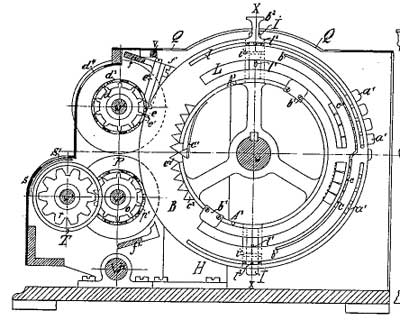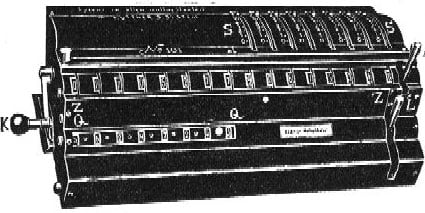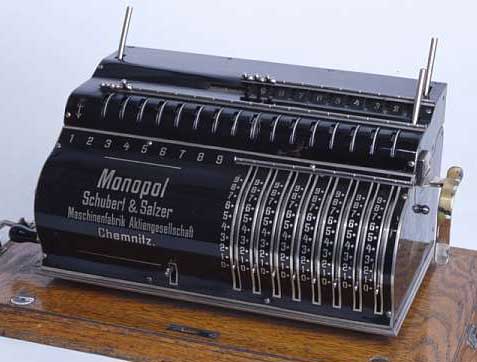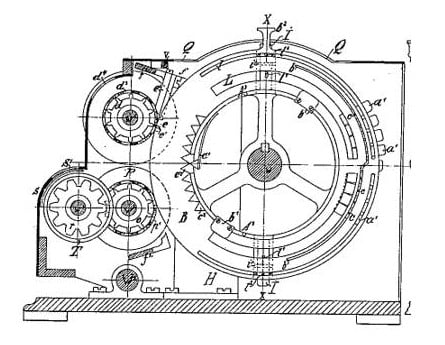Who was Wilhelm Küttner
Friedrich Wilhelm Küttner (1841-1920), a German businessman from Burgk bei Potschappel (near Dresden), chose to spend his money developing a calculating machine in the early 1890s. Woldemar Heinitz conceived and built the device based on the pin-wheel mechanism known in Europe as Odhner’s wheel. Later Küttner received Swiss (CH9450, 07.12.1894), French (FR243015, 20.11.1894), and US patents (US patent 650066, 23.01.1895).

Early life
Wilhelm Küttner was a citizen of the Kingdom of Saxony, and a resident of Burgk, near Potschappel, in the Kingdom of Saxony, German Empire.
Quick Facts
- Full Name
- Friedrich Wilhelm Küttner
- Net Worth
- NA
- Children
- Luise Kuttner
- Nationality
- German
- Place of Birth
- Augsburg, Bavaria, Germany
- Institutions
- NA
- Contributions
- Simplex/Duplex
Career
Wilhelm Küttner had invented specific new and useful improvements in Calculating Machines and Mechanical Calculators (for which he received a German patent, dated November 23, 1894, No. 84,269, o and a Swiss patent, dated December 7, 1894, No. 9,450,)
What Did Wilhelm Kuttner Invent
Calculating Machine
The Küttner machine had 12 x 30 x 15 cm, and the weight was around 7 to 8 kg. The Küttner machine was the first pin-wheel machine to have tens-carry in the revolution counter, assuring the proper value in the revolution counter not only in conventional but also in shortcut multiplications and divisions for the first time. For a brief while (1894-1902), the machine was built in Dresden by Wilhelm Küttner and Woldemar Heinitz’s Rechenmaschinenfabrik Heinitz & Küttner under the names Simplex and Duplex.

Later, Küttner transferred the production rights to other businesses, and the device was produced by Dresdner Kontrollkassen und Rechnungsfabrik in Dresden (under the guidance of Heinitz) until 1904, and then by Schubert & Salzer in Chemnitz until 1914 under the name Monopol. There are versions with printing mechanics and ones that run on electricity.
The position of the individual motions differs between the early Monopol machines and the later Monopoly machines built on Küttner’s engine. The revolution counter and the result mechanism are at the front of the machine, both of which may be folded forward, and the setting mechanism is behind it, using wheels with radially moving rungs. Despite the technological advancements, these extremely well-built machines could not defeat competitors such as Brunsviga.

The machine was the first pin-wheel machine to have tens-carry in the revolution counter, guaranteeing that the proper value appeared in the revolution counter not only in standard multiplications and divisions but also in shortcut multiplications and divisions for the first time. The creator named the machine Duplex, which was manufactured for a while by Wilhelm Küttner and Woldemar Heinitz’s Rechenmaschinenfabrik Heinitz & Küttner in Dresden under that name. Woldemar Heinitz (1874-1946) was a great Dresdner engineer with a patent for a Duplex mechanism enhancement and numerous other calculating machine inventions.
Wilhelm Küttner’s invention relates to new and useful improvements in calculating machines adapted to perform fundamental arithmetic operations. The Küttner machine consisted of a central driving axle or shaft. The shaft itself is mounted on a series of calculating wheels provided with a set ting-ring and a series of teeth. This formation operates the registering drums placed upon a parallel shaft through the medium of gear wheels. These wheels are then secured to the hubs of the registering drums, the tens-transfer wheels. The ten-transfer wheels are operated by the registering drums or wheels through the means of a transfer-lever provided with two tooth-like projections and a cam, ratchet-teeth, and springs to hold the transfer-lever in position and revolution counter-wheels and radiating drums which are operated in turns.
The Küttner machine’s various parts can be explained as follows, each system of characteristics similar in construction and purpose is described in regular order under the following divisions. First, the calculator and tens-transfer disks are mounted upon a standard axle and keyed to that, and are operated, as herein shown, utilizing a crank connected with the said driving axle, the gears of the said calculator and the tens-transfer disks being turned in either direction and engaging with the subsequent mechanism by gearing in the future described in detail.
Second, the registering drums indicate the results of the various calculations made by the machine, and, third, the revolution counter wheels mounted upon separate axles and adapted to register the number of revolutions of the driving axle in either direction or the number of similar operations performed by the machine, either continued addition, that is multiplication or continued subtraction which is division.
Besides these central systems of mechanism, the machine embodies various new and useful devices for registering and checking the interaction between the calculating and registering parts, transferring tens in either direction, and turning back all of the reading drums to the reading position.
Wilhelm Kuttner: Marriage, Divorce, Children, and Personal Life
Marriage
Wilhelm Küttner married a lady named Luiza Gigax/Gigot. Luiza Gigax/Gigot was born in 1850.
Children
Wilhelm Kuttner had one child with Luiza Gigax/Gigot. They later named their child Luise Kuttner. Luise Kuttner was born in 1879 in Moscow, Russia.
Wilhelm Kuttner: Awards and Achievements
Wilhelm Küttner’s calculating machine (DE84269, 23.11.1894: Rechenmaschine with Zwangsläufiger Bewegung der Registrirräder und des Tourenzählers) was granted a patent in 1894. Later, Küttner won Swiss (CH9450, 07.12.1894), French (FR243015, 20.11.1894), and US patents (US patent 650066, 23.01.1895).


